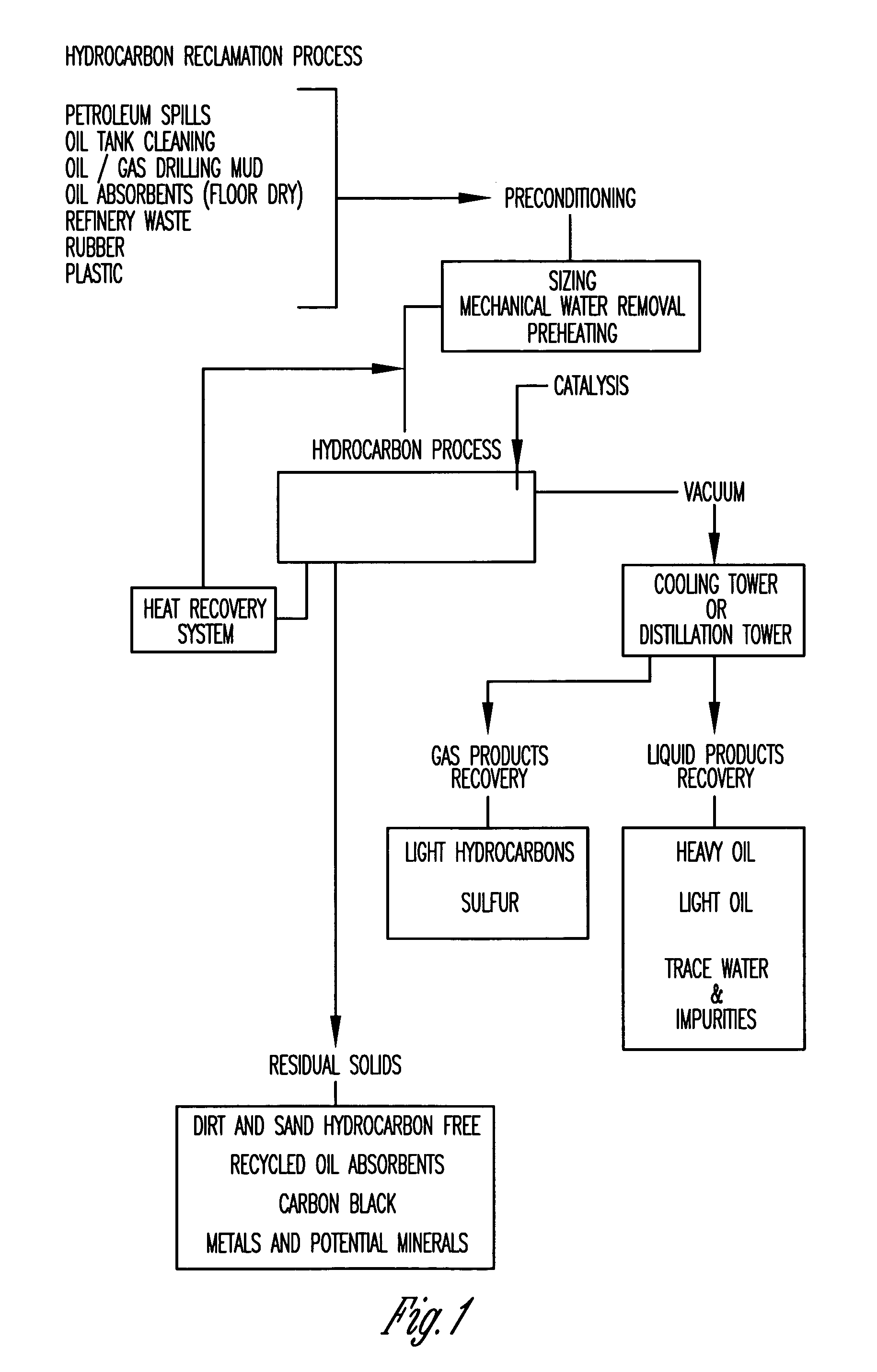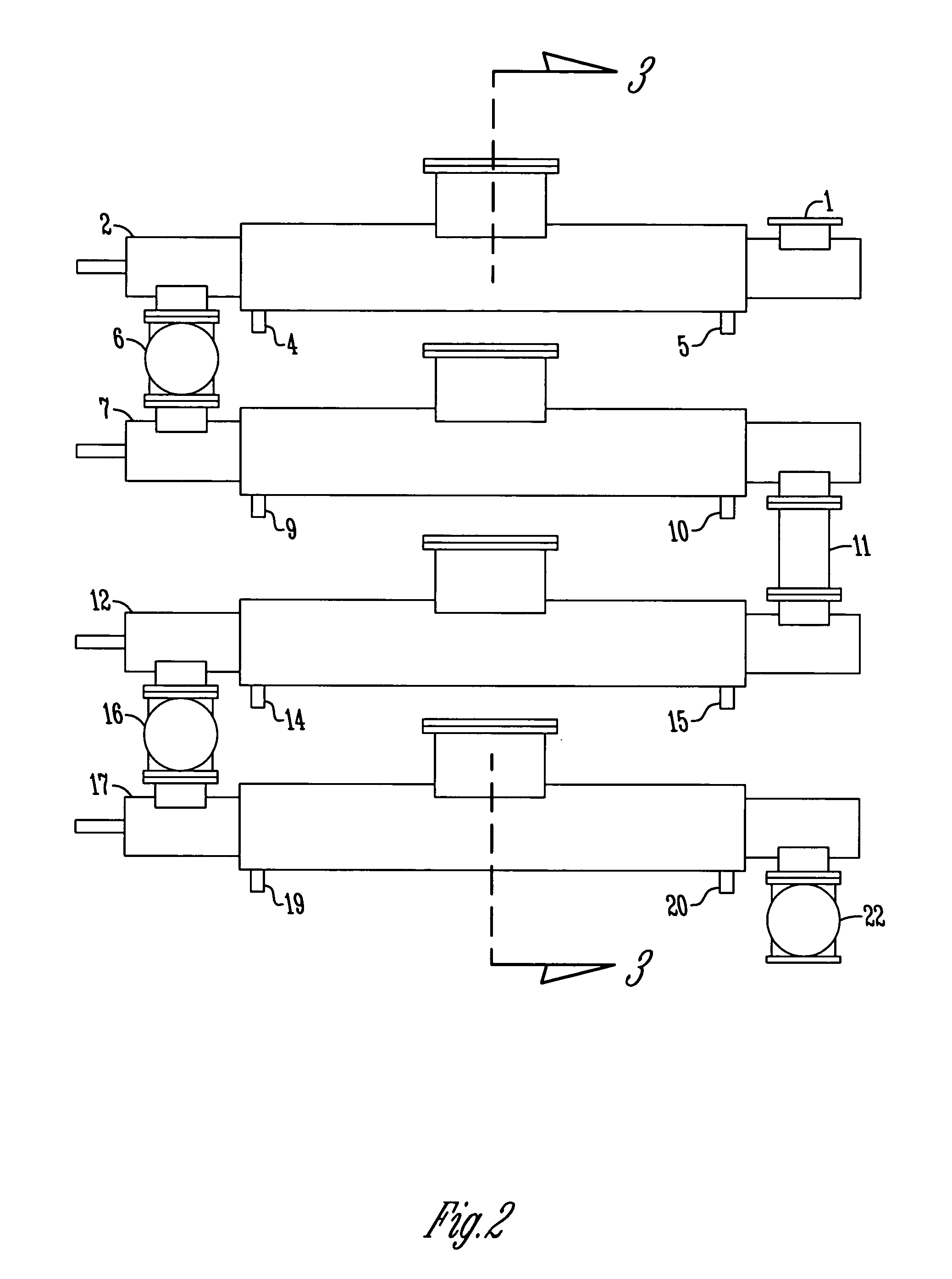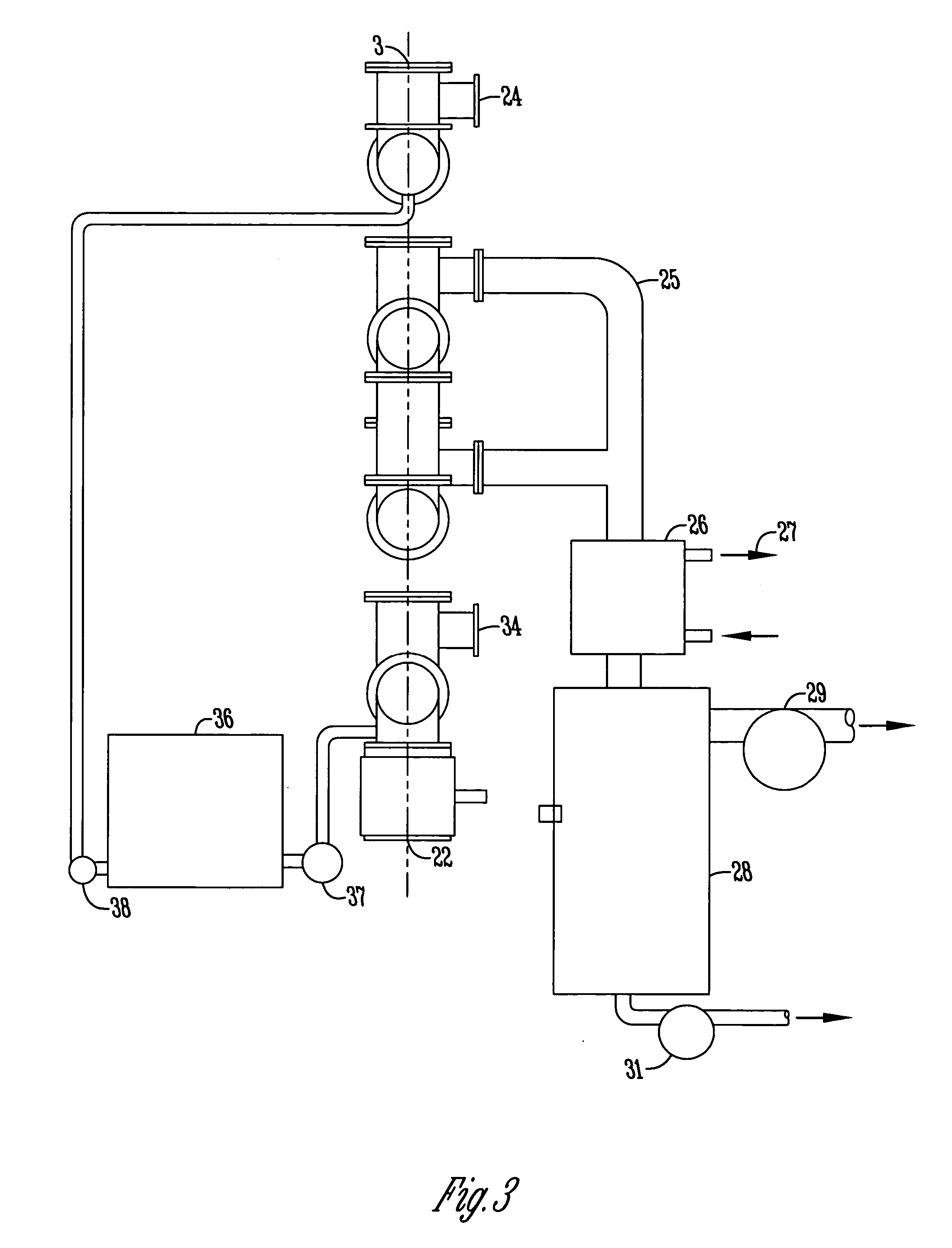Method of separating and converting hydrocarbon composites and polymer materials
a technology of applied in the field of separating and converting hydrocarbon composites and polymer materials, can solve the problems of high cost of current processes, large water use, and difficulty in disposing, and achieve the effects of high cost, cost-effectiveness, and safe and efficien
- Summary
- Abstract
- Description
- Claims
- Application Information
AI Technical Summary
Benefits of technology
Problems solved by technology
Method used
Image
Examples
example 1
Preferred Hydrocarbon / Polymer Reclamation Process
[0053]FIG. 1 illustrates a preferred hydrocarbon reclamation process in accordance with the present invention. Hydrocarbon and polymer waste materials, such as petroleum spills, oil tank cleaning, oil / gas drilling mud, oil absorbents, refinery waste, rubber, or plastic, as well as natural materials such as tar sand, oil sand, and heavy crude, are preconditioned by (a) reducing particle size; (b) removing excess water; and (c) heating.
[0054] The heated material next undergoes the catalytic reaction, and enters the “hydrocarbon process”. There, the waste gases and vapors are removed by vacuum and enter a cooling or distillation tower. The gaseous products are recovered in the form of light hydrocarbons, while the liquid products are recovered as heavy oils, light oils, trace water, and various impurities.
[0055] The material with the hydrocarbon / polymer removed is recovered and cooled. The heat given off by the material during the coo...
example 2
Preferred Hydrocarbon / Polymer Reclamation Process
[0056] 1. The mixture or compound of materials making up the hydrocarbon composites or polymer-bearing waste is reduced in size, conditioned, excess moisture removed by centrifugation, and fed into a machine line.
[0057] 2. The material is fed into the first of three heated chambers equipped with internal conveyors and airlocks to support a normal negative operating pressure of less than 0 to about −15 kPa and anaerobic environment.
[0058] 3. Once conveyed into the first chamber, moisture is removed by heating the mixture to a temperature of about 100-150° C. This elevated temperature drives the moisture from the mixture in the form of water vapor that is removed by the vacuum generator. This in turn draws the vapor through a condenser wherein the vapor is liquefied. The liquid is clarified through a centrifuge if necessary prior to disposal.
[0059] 4. The dried material passes through an airlock and into a second heated chamber that...
example 3
Preferred Equipment for Use in the Hydrocarbon / Polymer Reclamation Process
[0064]FIG. 2 and FIG. 3 illustrate preferred equipment for use in the hydrocarbon / polymer reclamation process of this invention.
[0065] Natural and / or waste material containing hydrocarbon and / or polymer is fed into the raw material inlet 1 where it proceeds to the first stage chamber, preheat, and water removal area 2. There, the material is heated using hot oil inlet 4 and dried to reduce its moisture content. Numeral 5 indicates the hot oil discharge area. Other hot oil inlets are indicated by numerals 9, 14, and 19, while other hot oil discharge areas are indicated by numerals 10, 15, and 20. Airlock 6 provides an atmosphere substantially free of oxygen. Other airlocks are indicated by numerals 16 and 22. Water vapor and potential light hydrocarbons produced during the drying stage is removed through a water vapor discharge 24.
[0066] The dried material next enters the second stage chamber 7 wherein it is...
PUM
 Login to View More
Login to View More Abstract
Description
Claims
Application Information
 Login to View More
Login to View More - R&D
- Intellectual Property
- Life Sciences
- Materials
- Tech Scout
- Unparalleled Data Quality
- Higher Quality Content
- 60% Fewer Hallucinations
Browse by: Latest US Patents, China's latest patents, Technical Efficacy Thesaurus, Application Domain, Technology Topic, Popular Technical Reports.
© 2025 PatSnap. All rights reserved.Legal|Privacy policy|Modern Slavery Act Transparency Statement|Sitemap|About US| Contact US: help@patsnap.com



